
Menu

Menu
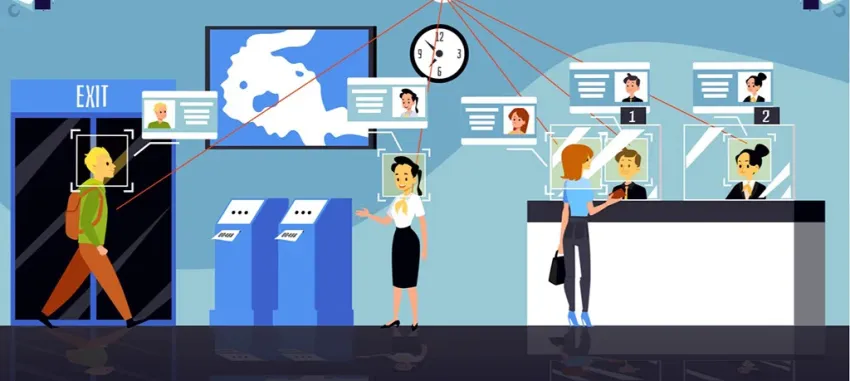
In February 2021, the UAE Cabinet announced plans to introduce the more general use of facial recognition systems across various business sectors. Specifically, facial recognition is biometric software capable of uniquely identifying or verifying a person by comparing and analyzing patterns based on facial contours. As a result, almost instantaneous computations are made based on codes, and key facial features—such as the distance and shape of your eyes, the length of your chin and forehead, and the shape of your mouth—are used to create your unique facial geometry.
Facial recognition technology is still primarily used for security purposes. However, there is increasing interest in other areas of use, such as customer service, unlocking devices in place of passwords, and finding missing persons. In essence, the identification element answers the question: “Who are you?” while the authentication aspect addresses the question: “Are you really who you say you are?” Therefore, the technology serves dual purposes that can enhance both security and user convenience.
Facial recognition has been in use since the 1960s. Yet, recent technological developments mean that it is now as accepted as other biometric identifiers, such as fingerprinting, iris recognition, voice recognition, and hand scanning. In particular, advancements in artificial intelligence and machine learning have improved the accuracy and efficiency of facial recognition systems, making them more reliable than ever before.
So how can we expect to see this technology being used in the future? Looking ahead, it is likely that facial recognition will expand into various sectors, including retail, healthcare, and transportation. For instance, in retail, businesses may utilize facial recognition to analyze customer behavior and preferences, thereby enhancing personalized marketing strategies. Similarly, in healthcare, the technology could streamline patient identification and improve security protocols, ensuring that sensitive data is only accessed by authorized individuals.
Moreover, as regulations and ethical considerations surrounding data privacy continue to evolve, it is crucial for organizations to implement facial recognition technology responsibly. By doing so, they can balance the benefits of enhanced security and convenience with the need for consumer trust and privacy protection.
In conclusion, the future of facial recognition technology holds significant potential across various industries. As this technology continues to advance, it is essential for stakeholders to engage in thoughtful discussions about its implications, ensuring that its adoption is both beneficial and ethical.
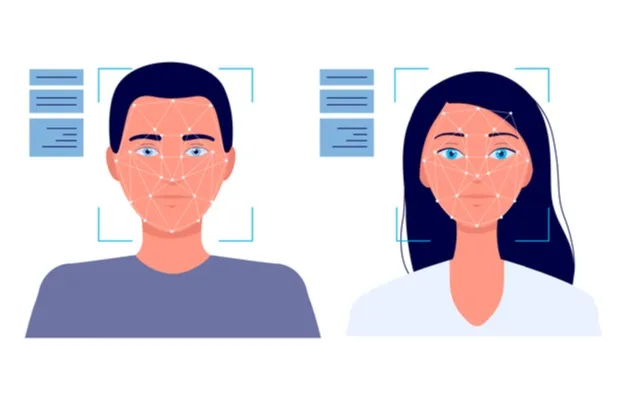
Face recognition is currently used to instantly identify when known criminals, such as shoplifters or those with a history of fraud, enter retail or banking premises. Specifically, images are matched against large databases of criminals, which allows security professionals to be instantly notified when someone who may pose a threat enters the premises. As a result, this technology not only enhances the security measures in place but also serves as a deterrent for potential offenders. Furthermore, by providing real-time alerts, businesses can respond more quickly to potential threats, ensuring a safer environment for customers and staff alike.
Face recognition can target advertising by analyzing customers to determine approximate age and gender in retail stores, for example. Moreover, over time, we are likely to see this type of use increasing, as it expands into personalized customer retention services. For instance, customers may be directed to specific products in-store based on past purchases or their membership in loyalty programs. Consequently, this approach not only enhances the shopping experience for consumers but also enables retailers to tailor their offerings more effectively, fostering stronger customer relationships and driving sales.
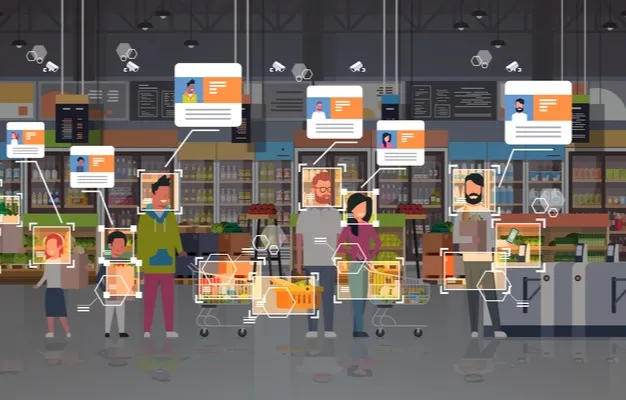
With the increased use of camera surveillance systems worldwide, particularly in open spaces and at transportation hubs, additionally, adding facial recognition capabilities means that faces can be scanned to help locate missing persons or victims of human trafficking. Furthermore, the same process can also be used to track missing pets, demonstrating the technology’s versatility in addressing various urgent needs. As a result, this application not only aids in public safety but also contributes to community well-being by reuniting families with their loved ones, both human and animal.
An interesting and emerging use of facial recognition technology is in applications to support people of determination. For instance, one of the most recent developments is an app that recognizes when people are smiling and can alert blind individuals with vibrations to help them better navigate in social situations. Moreover, future uses could, for example, notify someone if a friend or colleague is in attendance at an event or in a public space, thereby enhancing social interactions and fostering a more inclusive environment.
Mobile facial recognition apps can provide police officers or security personnel with instant identification from a safe distance. Additionally, an array of information can be provided that improves their safety by raising any concerns and recommending whether they need to be cautious. Consequently, these applications not only enhance situational awareness but also empower officers to make informed decisions quickly, thus ensuring a more secure environment for everyone involved.
Another emerging use of facial recognition is to help diagnose diseases that cause detectable changes in appearance. For instance, conditions such as genetic disorders or skin diseases may alter facial features, making them detectable through advanced facial recognition technology. As a result, healthcare professionals can utilize this technology to identify symptoms earlier and enhance patient care. Furthermore, as technology continues to improve, the use of facial recognition for medical purposes is likely to increase, ultimately leading to more accurate diagnoses and better treatment outcomes.
Some countries have already introduced payment options for customers using facial recognition. For example, in China, certain companies enable customers to place food orders through a digital menu, allowing them to use facial recognition as a payment option alongside their mobile number. In addition, another financial application involves bank ATMs, where facial recognition is being introduced to replace traditional cards. This shift not only enhances security but also streamlines the payment process, making transactions faster and more convenient for users.
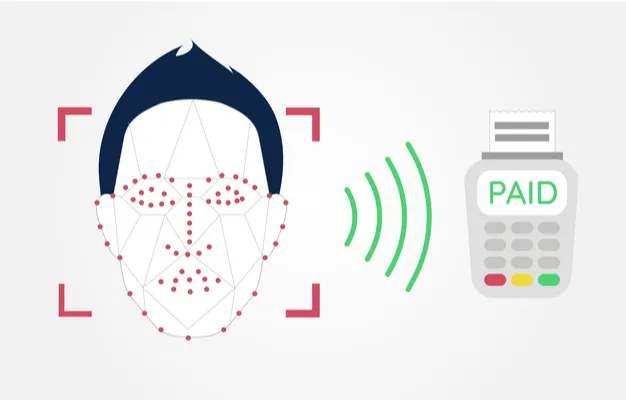
The use of facial recognition systems has become standard at many airports around the world. As a result, it has significantly cut waiting times while also enhancing security in and around airports. Furthermore, another benefit, which has become increasingly relevant since the start of the COVID-19 pandemic, is that this technology helps reduce the amount of physical contact needed when checking individuals’ identities. By minimizing touchpoints, airports can provide a safer and more efficient experience for travelers, thus addressing public health concerns while maintaining operational efficiency.
Traditionally, capturing employees’ time and attendance has been a relatively manual process, relying on methods such as punching machines, hand scans, or fingerprint recognition. Unfortunately, these practices often lead to errors in records and friction between supervisors and employees. Moreover, access systems using identity cards or punch cards come with their own challenges, as cards are frequently misplaced or misused. Since the onset of the COVID-19 pandemic, even finger or hand-scan entry systems have presented issues due to the need for sanitization between each use, creating significant logistical problems. Additionally, all of this comes with the cost of the hardware and software required to operate these systems.
As a result of the heightened need for social distancing, hygiene, and minimizing physical contact, now is the perfect time to consider an alternative: a facial recognition-based time and attendance system. This innovative solution can eliminate many of the aforementioned problems by automatically capturing an employee’s identity and instantly recording his or her attendance.
Once an employee’s face is registered in the system, the cameras can recognize the individual when they appear, instantly marking attendance and granting building access as appropriate.
The benefits of using facial recognition for access and attendance are numerous. These include ease of use, speed of registration, reduction in fraudulent access, improved data accuracy, and reduced costs. Ultimately, implementing such a system can streamline operations while enhancing security and employee satisfaction.
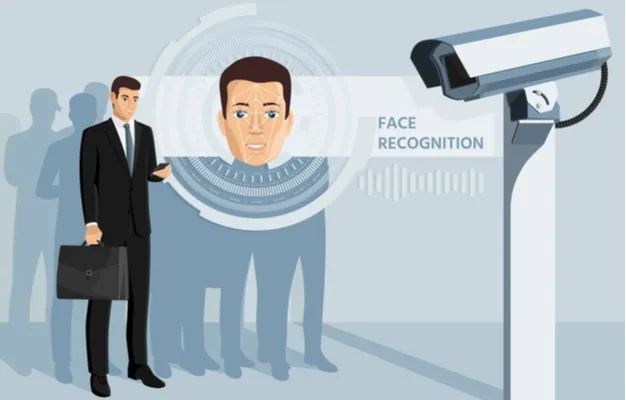
The HRBluSky HRMS has integrated wide-ranging facial recognition features for time attendance and access management, including the following:
A mobile app designed for various devices and operating systems offers employees an accessible solution with just a single touch. This convenience enables them to check attendance, request time off, and view schedules anytime and anywhere, enhancing overall efficiency and engagement. The user-friendly interface allows even those who are not tech-savvy to navigate the app easily.
Moreover, the mobile app can send real-time notifications and reminders, keeping employees informed about upcoming shifts or schedule changes. This functionality minimizes confusion and helps employees stay organized, leading to better time management.
Additionally, the app can include features like a digital ID for facial recognition attendance. This not only streamlines the check-in process but also enhances security by ensuring that only authorized personnel can access the system.
Overall, leveraging a mobile app helps organizations create a more connected and engaged workforce while simplifying time and attendance management. This accessibility empowers employees to take ownership of their schedules and boosts overall productivity.
Geo-fencing technology enhances time and attendance systems by ensuring that employees can only log in when they are physically present at authorized office locations. By utilizing GPS and location-based services, the system creates a virtual perimeter around designated work areas. This feature accurately tracks attendance and significantly reduces the risk of buddy punching or fraudulent entries.
Moreover, geo-fencing provides organizations with real-time insights into employee presence. For example, if an employee attempts to log in from outside the geo-fenced area, the system automatically flags this attempt and alerts managers to potential discrepancies. This real-time monitoring enables supervisors to address attendance issues promptly.
Additionally, geo-fencing can streamline the onboarding process for new employees. Once an employee enters the geo-fenced area for the first time, they can receive automated welcome messages or onboarding tasks via their mobile app, enhancing their overall experience. This integration not only smooths the onboarding process but also reinforces the company’s commitment to utilizing modern technology for efficient operations.
Overall, implementing geo-fencing technology strengthens attendance tracking, promotes accountability, and enhances workplace security. By ensuring employees are present in the right location, organizations can foster a more reliable and efficient work environment.

The time attendance system seamlessly integrates with payroll management, ensuring accurate capture of all hours worked. This integration eliminates issues like late attendance or unrecorded overtime, preventing payroll discrepancies and employee dissatisfaction.
By linking attendance data directly to payroll systems, organizations can automate wage calculations based on actual hours worked. As a result, employees receive accurate pay, including overtime, which fosters trust and transparency within the workplace.
Additionally, this integration offers real-time reporting and analytics, allowing managers to access insights into attendance patterns and overall workforce productivity. This data-driven approach enables informed decisions about staffing needs and resource allocation, ultimately improving operational efficiency.
Furthermore, managing compliance with labor laws and regulations becomes easier. By tracking attendance and payroll together, businesses can ensure adherence to legal requirements related to working hours and overtime, reducing the risk of penalties and legal issues.
Overall, integrating time attendance and payroll management streamlines processes, enhances accuracy, and supports compliance, leading to a more efficient and harmonious workplace.
One significant advantage of the facial recognition time attendance system is that it requires no specific hardware, software, or specialized installation and training. This simplicity allows organizations to adopt the system quickly, avoiding the complexities often associated with traditional attendance solutions.
Moreover, automated updates reduce the need for human intervention, streamlining both implementation and ongoing use. As a result, businesses can maintain the system easily and enjoy the latest features without the hassle of manual updates or additional training sessions.
This flexibility enables organizations to adapt the system to their changing needs with minimal disruption. Consequently, they can concentrate more on core operations instead of managing cumbersome attendance processes.
Overall, the ease of implementation and maintenance makes this system an attractive option for organizations aiming to enhance their time and attendance management efficiently.
One primary benefit of a facial recognition time attendance system is its ability to ensure that only valid employees can access office premises. By leveraging advanced technology, organizations can effectively prevent unauthorized entry and enhance workplace security.
In addition to security, this system provides precise time attendance recording, offering detailed insights into the minutes each employee has worked in a day. As a result, employers can monitor attendance more accurately, ensuring that every minute worked is accounted for.
Moreover, this capability helps organizations identify trends in employee attendance and productivity, enabling better workforce management. Consequently, businesses can make informed decisions about staffing and operational efficiency, leading to improved productivity and accountability within the workplace.
The facial recognition time attendance system allows for recording the entry and exit of visitors, significantly improving organizational protection. By capturing visitor data, companies can monitor who accesses their premises, ensuring that only authorized individuals are allowed entry.
Furthermore, this system enhances accountability by maintaining a detailed log of visitor activity, including timestamps and identification information. As a result, organizations can quickly identify potential security breaches or unauthorized access attempts, thereby strengthening their security protocols.
In addition to security benefits, effective visitor management fosters a safer environment for employees and clients alike. Ultimately, this leads to increased trust and peace of mind, knowing that robust measures are in place to protect the organization’s assets and personnel.
The facial recognition time attendance system ensures that employee data is accurate and readily available for audits, analysis, and management reports. By automating data collection, organizations can eliminate common errors associated with manual timekeeping, resulting in reliable records essential for compliance and decision-making.
Moreover, accurate attendance data enables effective workforce management. Managers can identify patterns in employee attendance, assess productivity levels, and allocate resources more efficiently. This data-driven approach allows organizations to make informed decisions that align with overall business objectives.
Additionally, accurate records simplify the audit process significantly. Organizations can demonstrate compliance with labor regulations and internal policies more effectively, thus reducing the risk of penalties or issues arising from inaccurate reporting.
To find out more about how HRBluSky can help you simplify your operations, click here.
Alignment
Article
Audit
Automation
Benefits
Candidate
Communication
Compliance
Digitalisation
Digital Technology
Diversity
Emirates Id Application
Employee Experience
ESS
Feedback
Health and Safety
HRMS
HR Strategy
HR System UAE
Human Resource Management
Human Resource Management Systems
Job Roles
Learning and Development
Onboarding
Outsource
Payroll
Payroll Management System
Payroll Processing
Performance
Performance Management
Personalisation
Recruit
Recruiting
Recruitment
Remote Working
Rewards
Security
Service Providers
Skills
Smart
Survey
Virtual
Visa Cancellation
Work Environment
Workforce
© 2025 Pruvity HR Solutions Pvt Ltd, Madurai, India